In today's fast-paced business environment, having a robust business continuity plan is more essential than ever, especially for suppliers. A well-structured plan not only ensures that operations can continue smoothly during unexpected disruptions but also strengthens trust with partners and customers alike. By outlining key strategies and resources, you can guard against potential pitfalls and ensure resilience in your supply chain. Curious to learn how to craft an effective supplier business continuity plan? Read on!
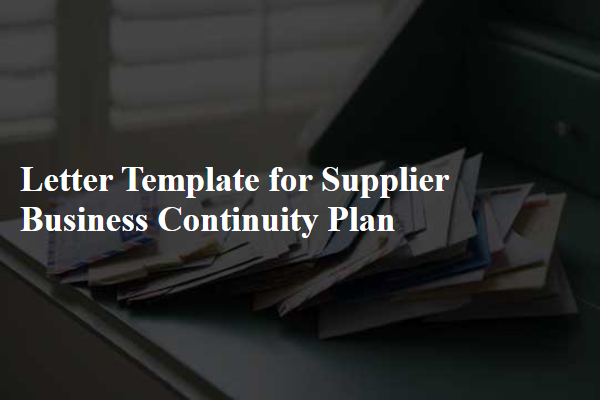
Contact Information
A comprehensive business continuity plan is essential for suppliers to maintain operations during unforeseen events. Key contact information must be clearly outlined, including primary contacts, alternate contacts, and emergency contacts. Each contact should include name, position, phone number, and email address. For instance, the primary contact could be John Smith, Operations Manager, reachable at (555) 123-4567 or john.smith@supplier.com. An alternate contact could be Jane Doe, Logistics Coordinator, available at (555) 987-6543 or jane.doe@supplier.com. Emergency contacts should be designated for critical situations, potentially including external resources such as the local emergency services number or a dedicated crisis management firm. This structured information not only aids quick communication but also ensures all team members are equipped to respond effectively during disruptions, maintaining supply chain resilience.
Risk Assessment and Mitigation Strategies
A comprehensive business continuity plan is essential for suppliers to manage risk effectively and ensure uninterrupted operations during adverse events. A thorough risk assessment should identify potential threats, such as supply chain disruptions, natural disasters like hurricanes and earthquakes, or cybersecurity incidents including data breaches. Mitigation strategies may include diversifying suppliers to reduce dependency on a single source, implementing inventory management systems for real-time tracking, and establishing an emergency response team to address crises swiftly. Regular training for employees on safety protocols and recovery procedures, coupled with creating a detailed communication plan for stakeholders, can enhance resilience. Periodic reviews of the plan are necessary to adapt to evolving risks and maintain operational integrity.
Communication Protocols
An effective communication protocol is crucial for ensuring business continuity during disruptions in supplier operations. Clear and timely communication can minimize confusion and foster a collaborative response to crises. Establishing a hierarchy of communication channels, such as direct email (e.g., supplier@company.com) and dedicated emergency hotlines (e.g., +1-800-555-0199), ensures swift dissemination of information. Regular updates via scheduled conference calls every Monday and Thursday can help maintain synchronization between supplier and client. In integrating digital platforms like Slack or Microsoft Teams, real-time messaging enhances responsiveness. Additionally, appointing specific personnel--such as a continuity manager--facilitates organized communication, ensuring stakeholder engagement and confidence. Documenting these protocols in a Business Continuity Plan (BCP) allows for easy reference, which can be critical during unexpected events such as natural disasters or supply chain disruptions.
Recovery Time Objectives
A robust Recovery Time Objective (RTO) is essential for maintaining supplier business continuity strategies in the face of disruptions. RTO defines the maximum acceptable duration for restoring critical operations after an adverse event, ensuring that supply chain processes resume effectively and efficiently. For example, a manufacturer in California may set an RTO of 72 hours for their component sourcing after a natural disaster, thereby enabling them to mitigate potential revenue loss and reputational damage. Factors influencing RTO include operational complexity, resource availability, and stakeholder expectations. In a global context, the RTO must consider dependencies on international shipping routes and local infrastructure resilience, particularly in regions prone to disruptions, such as Southeast Asia with its monsoonal weather patterns. By establishing a clear RTO, suppliers can create actionable plans that ensure vital functions are prioritized and restored promptly, safeguarding overall business viability and client relationships.
Roles and Responsibilities
The supplier business continuity plan outlines critical roles and responsibilities essential for maintaining operational resilience during disruptions. Key personnel include the Business Continuity Manager, overseeing plan implementation, ensuring compliance with industry standards, and coordinating recovery efforts. The IT Recovery Coordinator manages technology infrastructure resilience, focusing on data backup strategies and system restorations. The Operations Lead ensures the continuity of production processes and resource availability, minimizing downtime during crises. Additionally, the Communication Officer handles internal and external communication, providing timely updates to stakeholders about ongoing situations. Regular training sessions and simulation exercises are conducted to enhance preparedness, ensuring all team members understand their specific duties during emergencies, thus fostering a culture of proactive risk management.


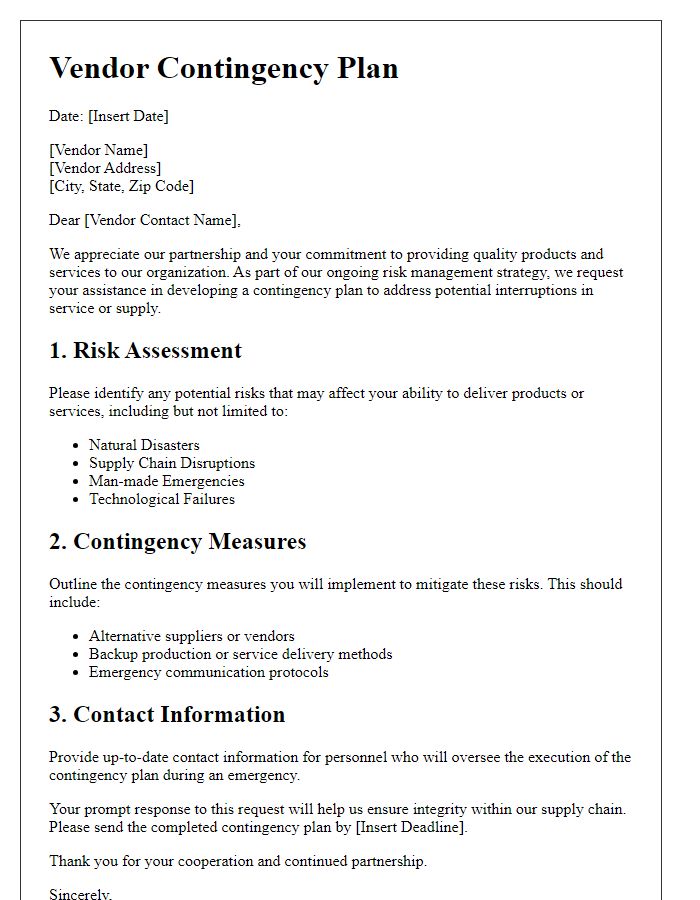
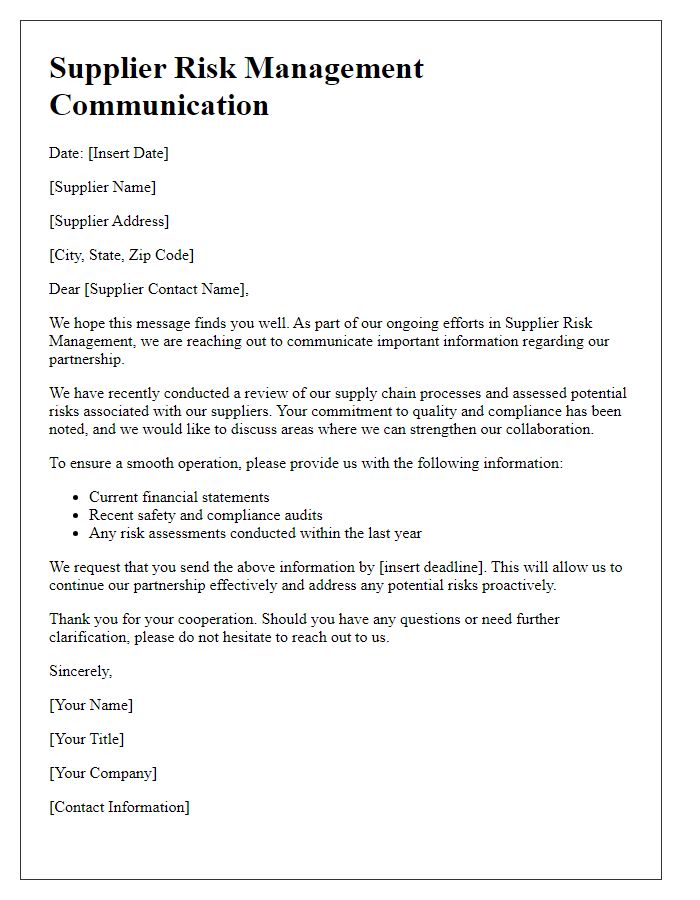
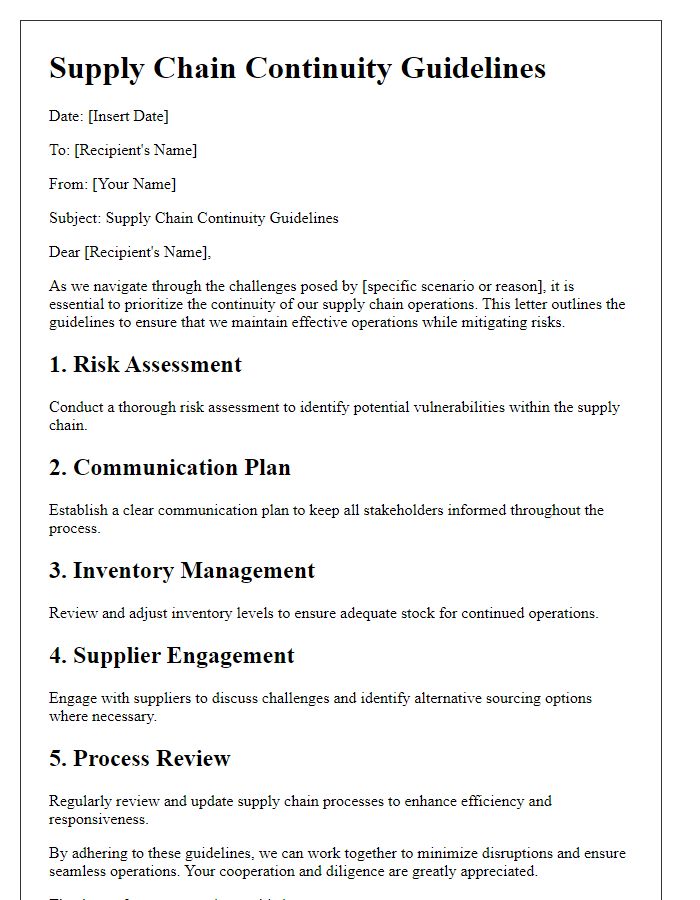
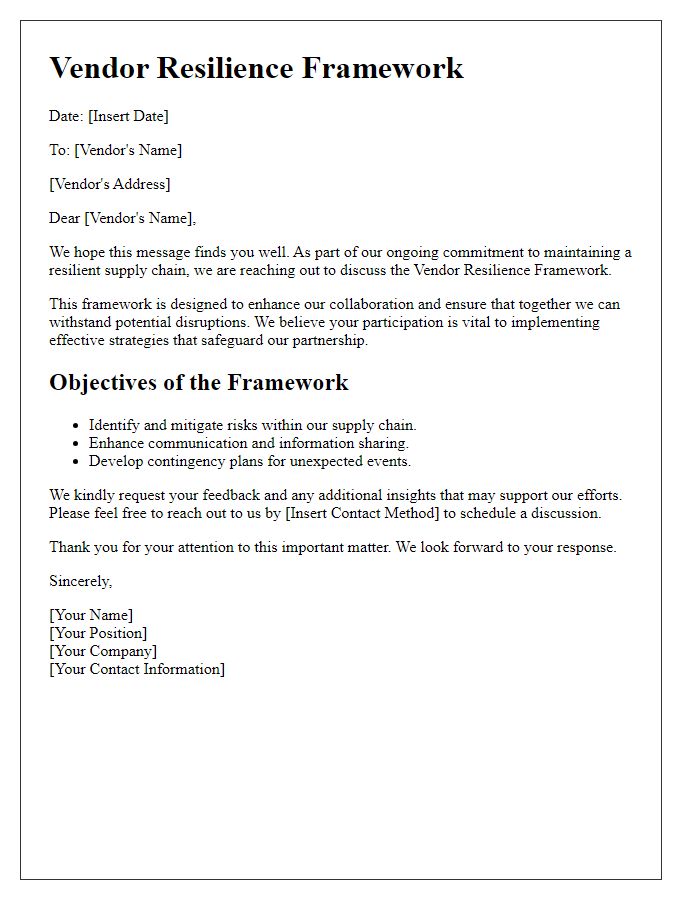
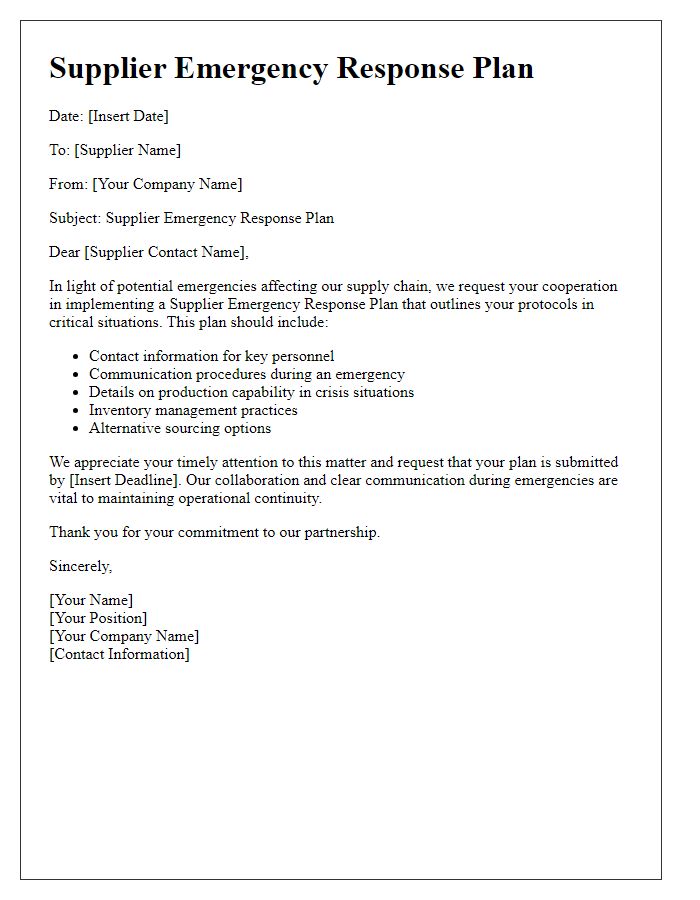
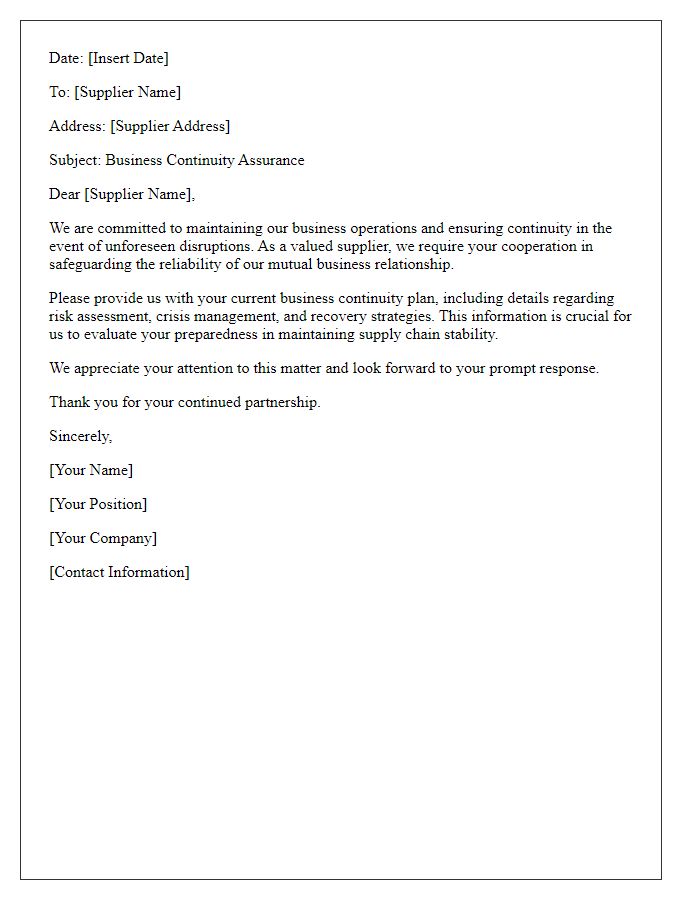
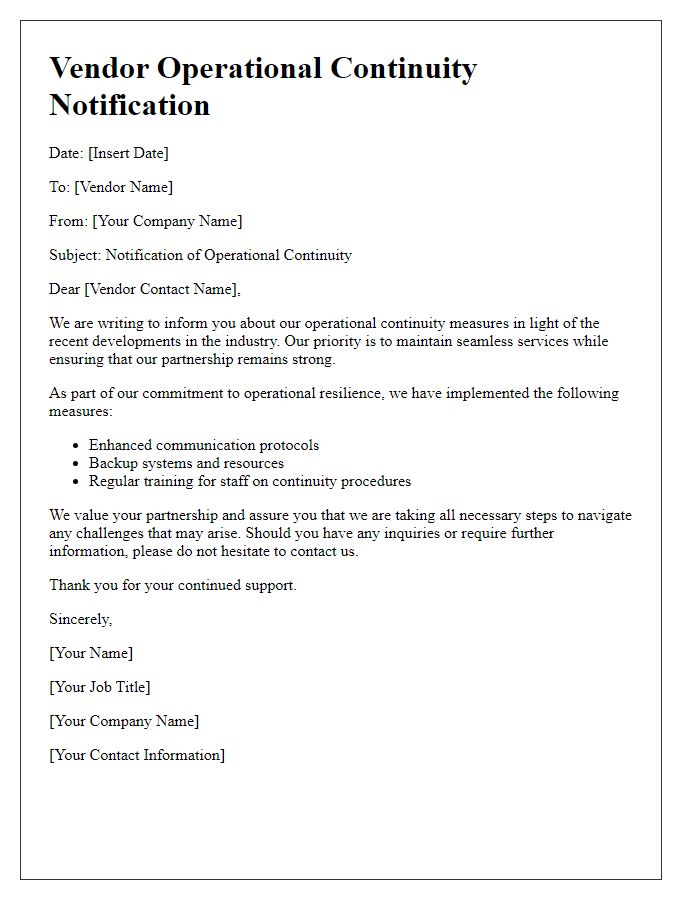
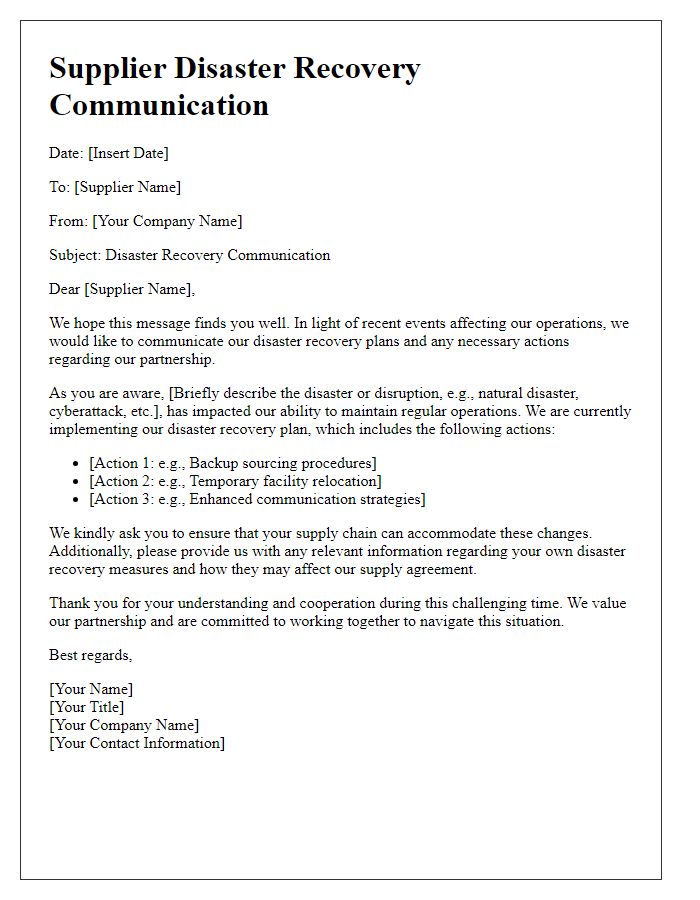
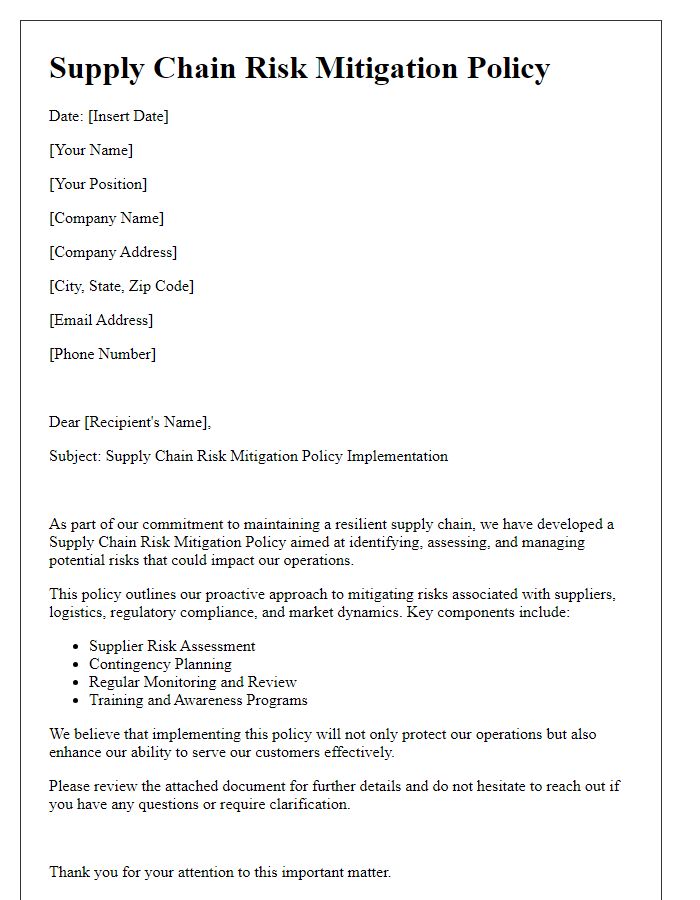

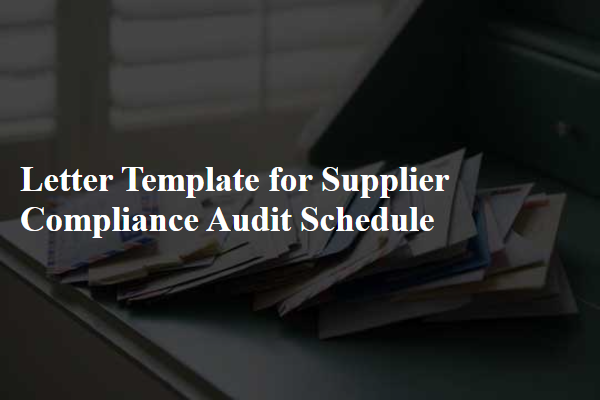
Comments